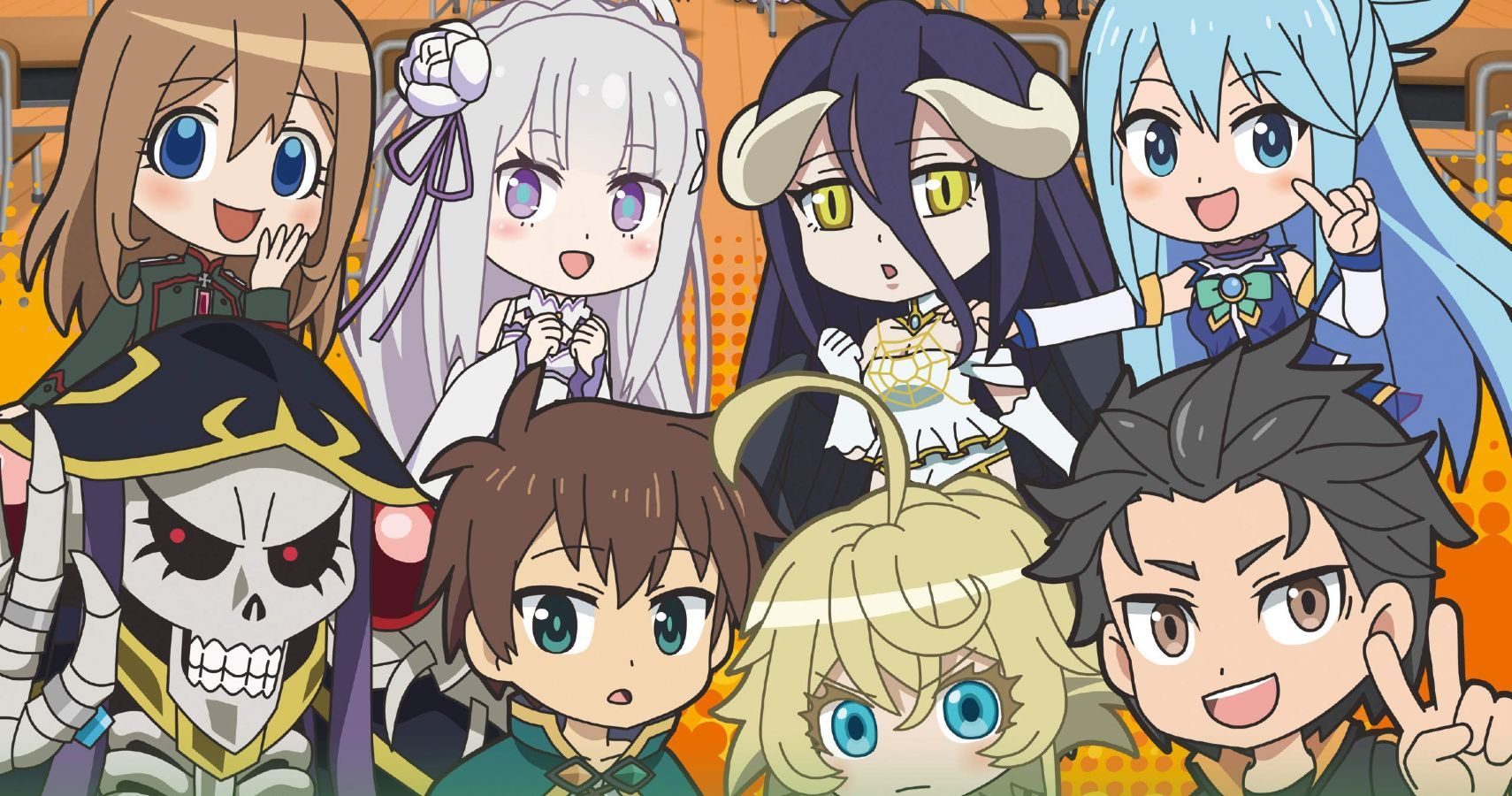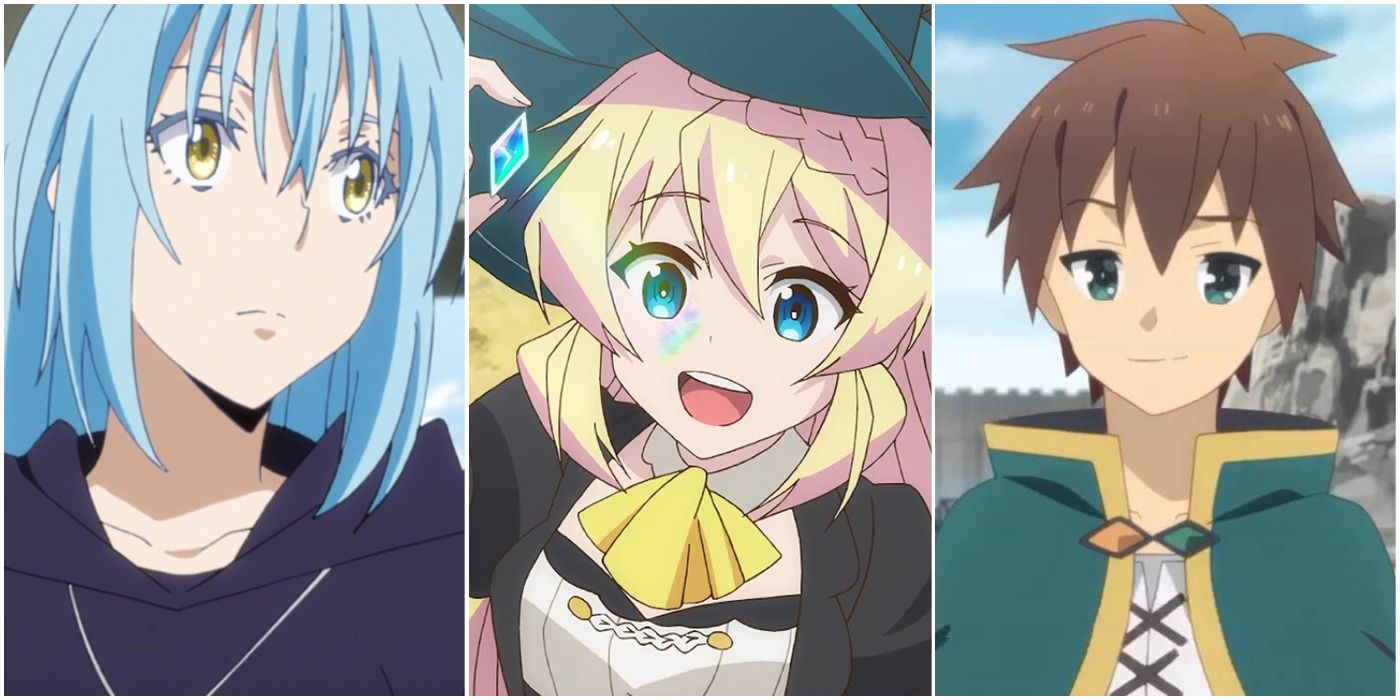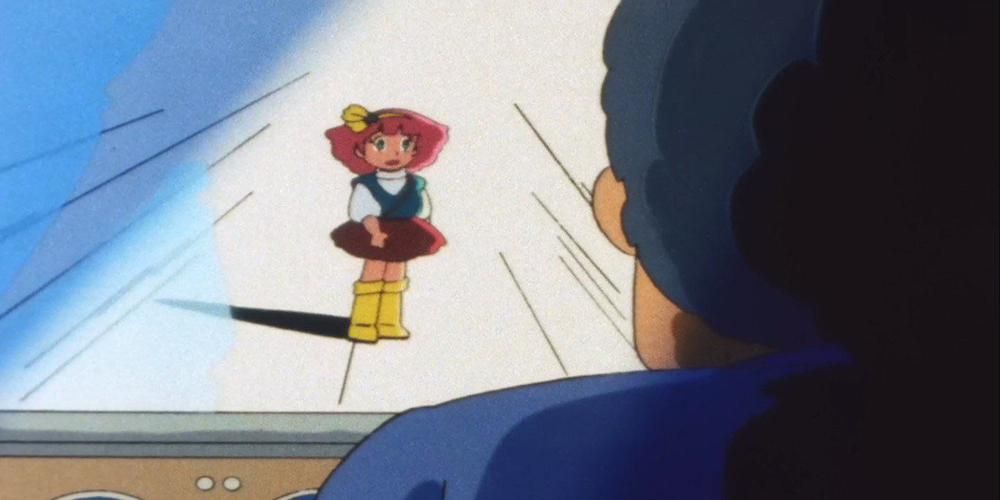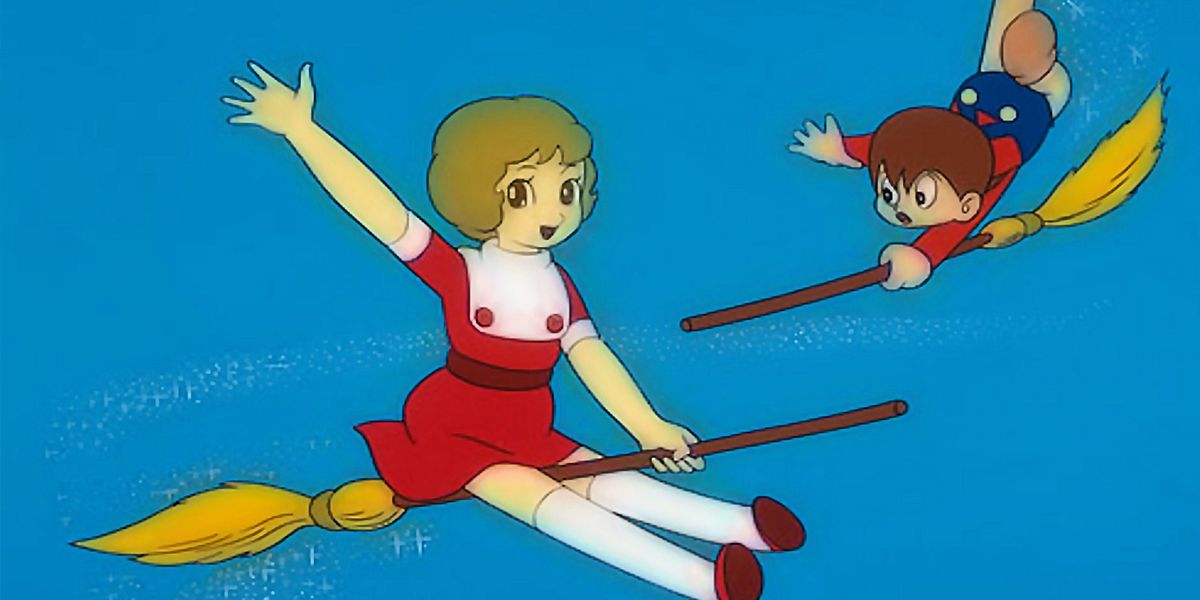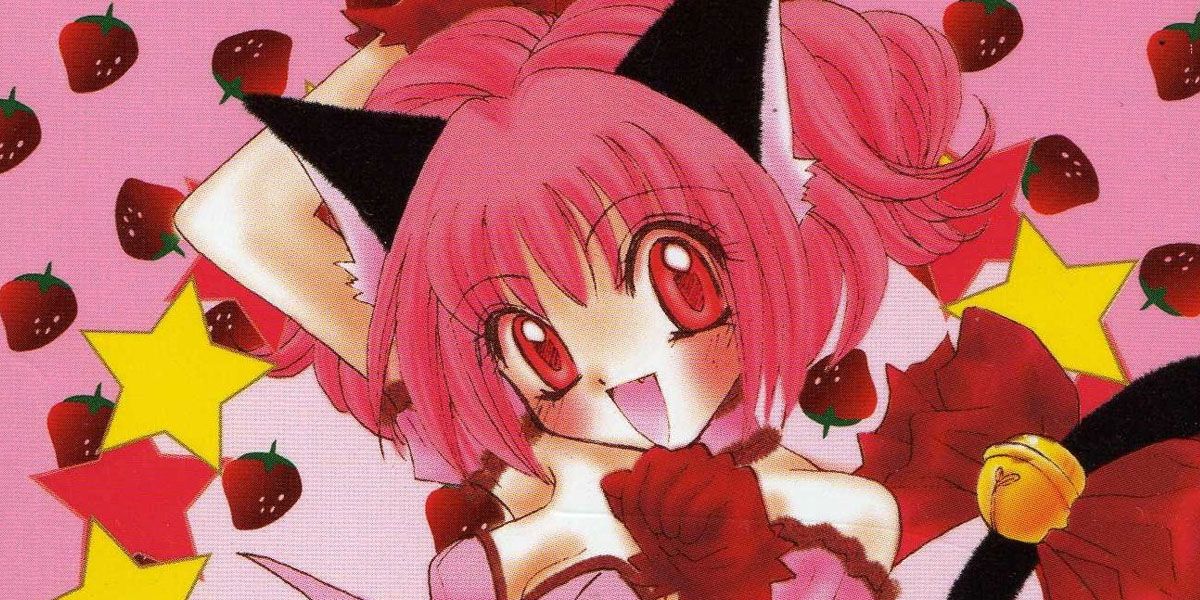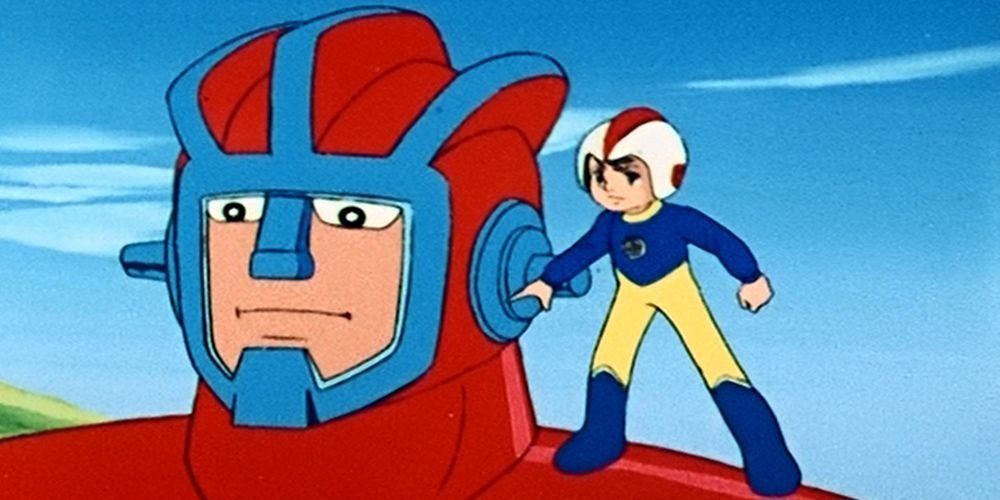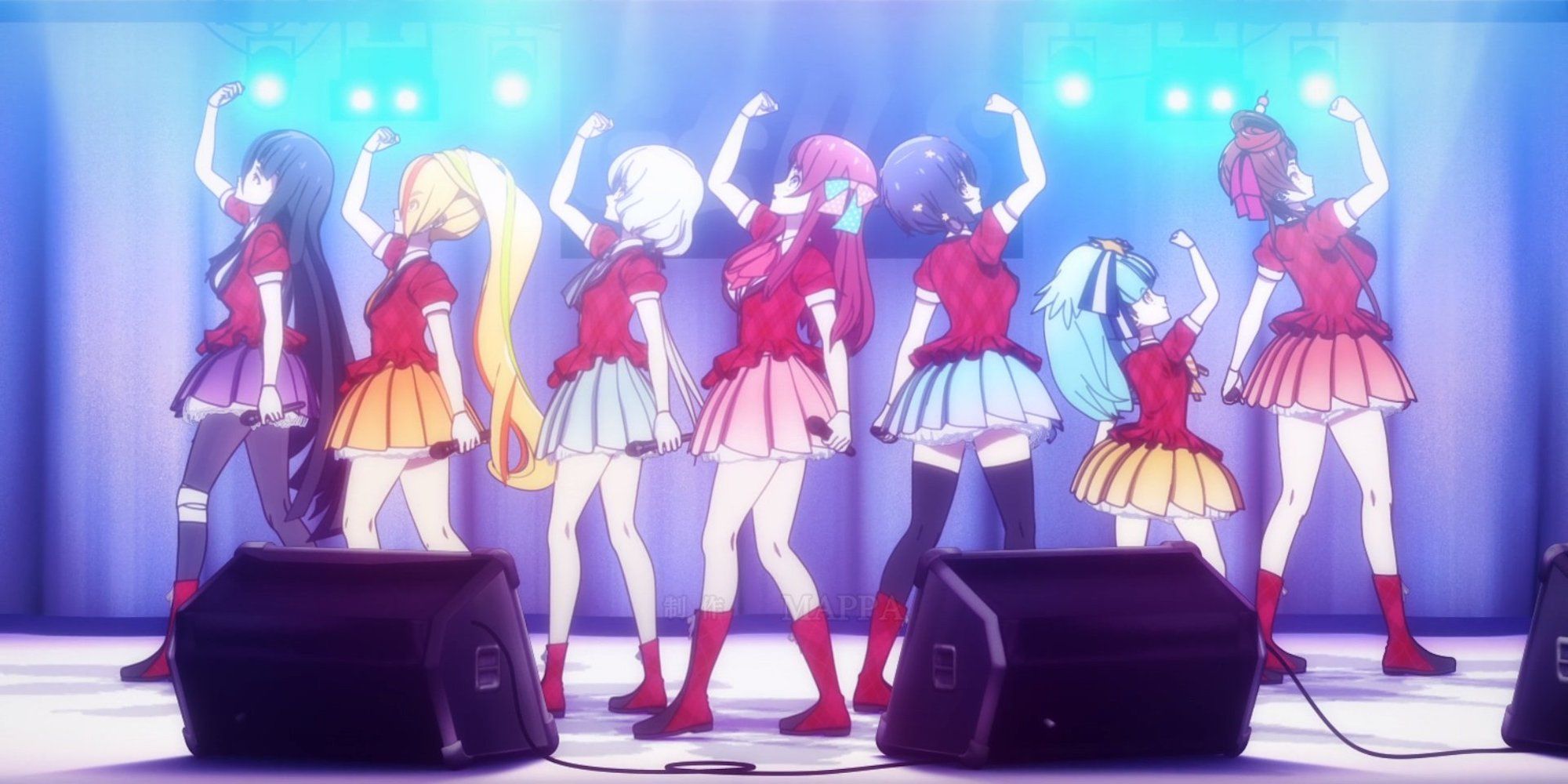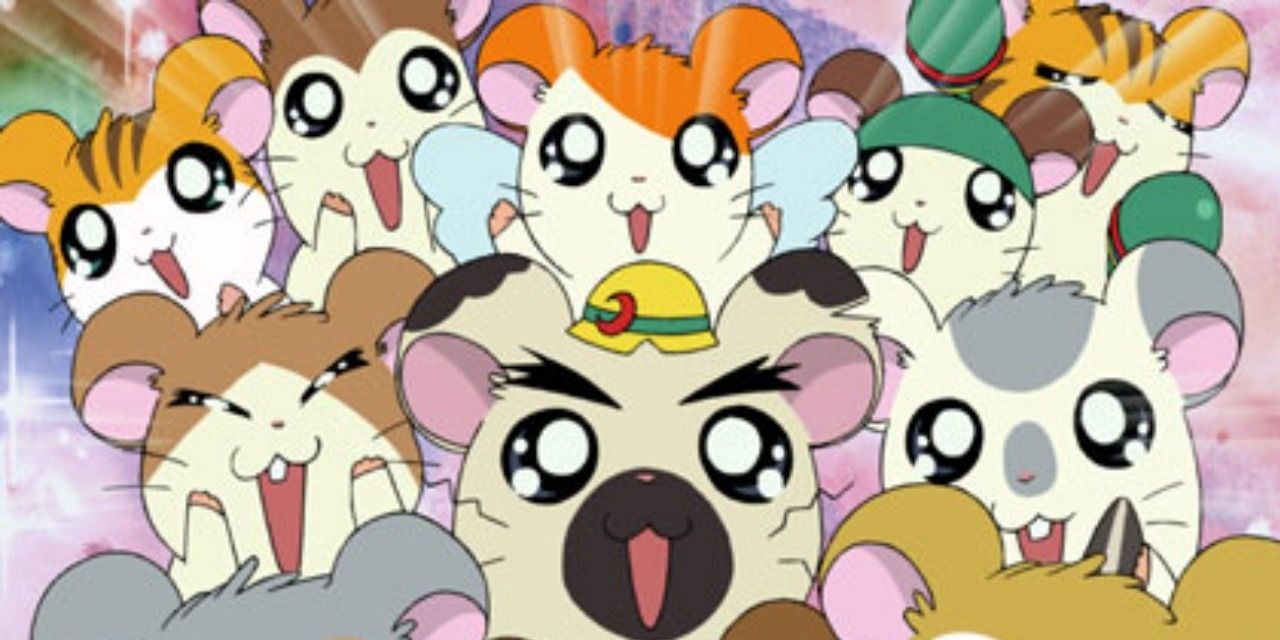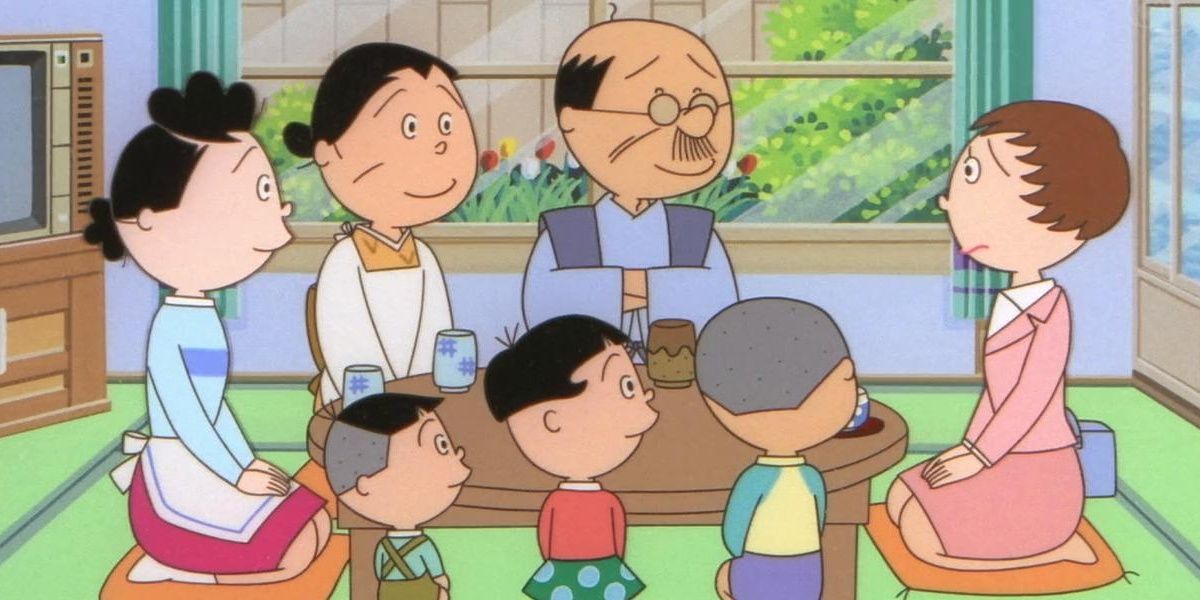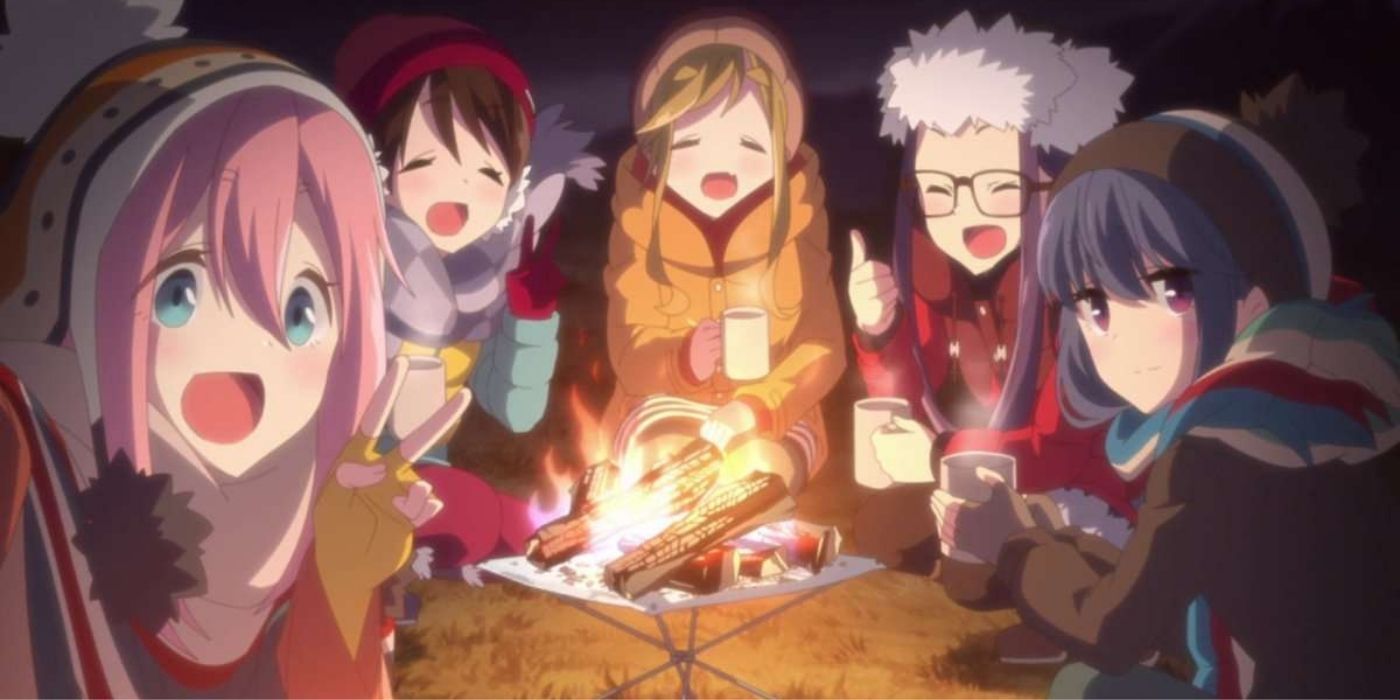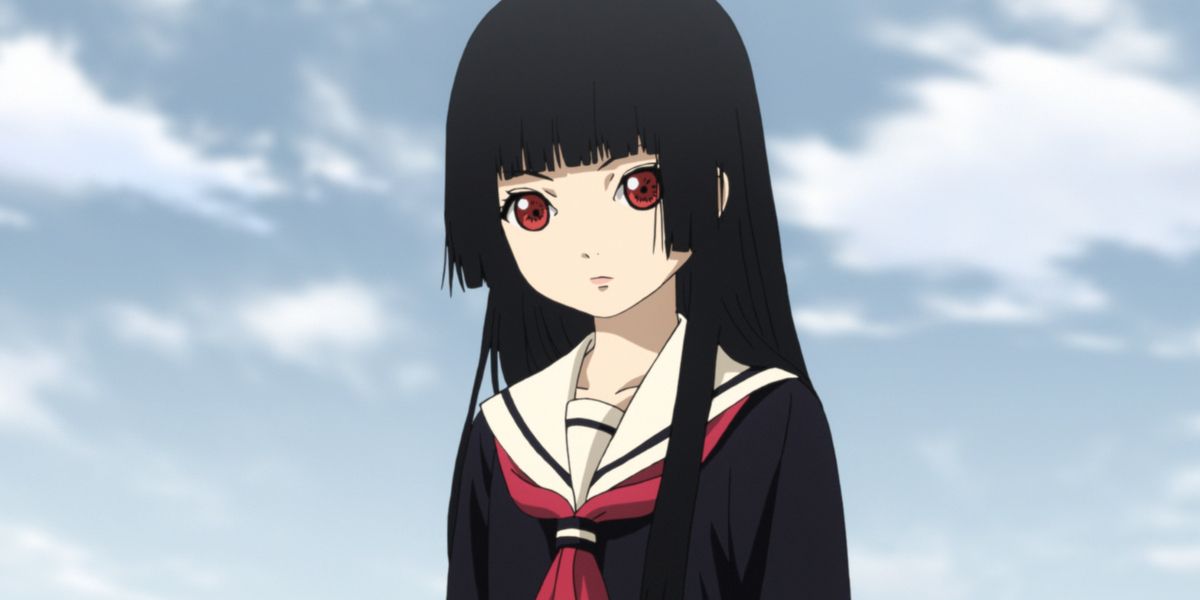Casual anime viewers might know that there's a difference between shonen and shojo anime, or josei and seinen, and some other genres are popular in both anime and other fiction, like fantasy or horror. But there are plenty of genres and subgenres that viewers might never have heard of.
It helps that, with new titles coming out all the time, new genres and subgenres are also being developed every day, as well as other trends. Once something gets popular, other people might want to tell their version of it. There's often some foreign influence when it comes to trends in anime. After all, the word "anime" is itself borrowed from the French.
10 Isekai: Enter The World Through The Looking Glass
Isekai, meaning "another world," is a popular genre of anime that revolves around characters venturing into other worlds. Usually with a supernatural element, this can take many forms, from a character dying and being reborn into a new world or being stuck in a video game.
In fact, characters going from a supernatural world to a more realistic setting is called "reverse isekai." Some popular examples if isekai include My Next Life as a Villainess, That Time I Got Reincarnated as a Slime, and Overlord. The genre has become so popular in recent years, it even inspired a crossover anime: Isekai Quartet.
9 Truck-Kun: This Character's Had Quite A History
Over the years, audiences have noted it's quite common for the main character to get run over by a truck. In isekai stories, a truck or similar vehicle might be what causes the main character to be reincarnated. But the concept isn't exclusive to isekai stories.
Yusuke of Yu Yu Hakusho first encounters the Spirit World after saving a child in a hit-and-run. Sakura of Zombie Land Saga wakes up as a zombie after getting run over. And it isn't always at the beginning: Minky Momo died in a similar manner midway through her show. Because of this, fans jokingly refer to such deadly trucks as "Truck-Kun" or "Isekai Truck Of Good Fortune," placing it as a great staple of anime.
8 Majokko: Before There Were Magical Girls, There Were Little Witches
Also known as "Little Witch" or "Cute Witch" anime, Majokko is the predecessor of the Magical Girl genre. Inspired by the popularity of the '60s sitcom Bewitched in Japan, these series often featured a young girl who used magical powers to solve everyday problems. Starting with anime like Sally the Witch and Himitsu no Akko-chan, other series would include Mahou Shojo Lalabel, Mahou Tsukai Chappy, Majokko Tickle, Mahō no Mako-chan, and Majokko Meg-chan.
By the 1980s, the genre took on the familiar "Magical Girl" name. In the 1990s, Sailor Moon popularized the idea of a magical heroine using her powers to fight evil like a superhero, which would codify how the genre is viewed in the West. The term "Cute Witch" is still used as a subset of the genre and often includes later examples: Ojamajo Doremi, Ultra Maniac, Sugar Sugar Rune, and Little Witch Academia.
7 Catgirls: Based On Shapeshifters Of Japanese Folklore
In the world of anime and manga, the catgirl is a character designed as mostly human, but with some feline features - usually ears and a tail. Folktales of cat-woman shapeshifters appear in Japanese antiquity, but the earliest anime example is from the 1940s, in Osama no Shippo. A more modern example is Ichigo Momomiya, who switches between human and catgirl forms, in Tokyo Mew Mew.
Despite the name, catboys aren't unheard of either and modern works can also feature other beings with different animal-themed appendages. Technically, the concept isn't too foreign to Western audiences, considering comic book characters like Catwoman and Josie and the Pussycats.
6 Mecha: The Genre Is About Robots With Limbs, Giant Or Otherwise
Mecha is an anime genre revolving around robotic machines. While the most famous mecha series are known for having giant robots, they can technically include smaller devices, but the defining feature is that they have limbs. Many examples revolve around the people who pilot the mecha, but some anime even feature autonomous machines.
While the genre has been around in some form since at least the 1940s, the '60s Gigantor series is considered one of the first. Go Nagai also helped define it with Mazinger Z. Other examples of the genre include Mobile Suit Gundam, Tengen Toppa Gurren Lagann, and Neon Genesis Evangelion. The genre is also credited with popularizing scale model robots.
5 Idol: This Genre Explores The Facets Of The Music Industry, Complete With Mermaids & Zombies
As the name suggests, the Idol genre revolves around the idol singer industry and is made up of various subgenres. Some feature fictionalized accounts of real-life idols, like Idol Densetsu Eriko and Pink Lady Monogatari. Others feature protagonists learning to become idols.
Some series feature a supernatural element. Examples like Creamy Mami, Full Moon o Sagashite, and Fancy Lala feature a heroine who transforms into an alter-ego that allows her to become an idol. Some series feature supernatural creatures becoming idols, like Mermaid Melody and Zombie Land Saga. Idol-themed anime has become so prolific that fictitious anime parodies often poke fun at the genre, like Hoshiiro Girldrop in Pop Team Epic.
4 Kodomomuke: This Genre Likes To Give Something Back To The Kids
While many people already associate anime with children's media, the Kodomomuke genre is anime explicitly aimed at young children, especially ones thought to be too young to enjoy shojo and shonen series. Because of this, the genre is considered somewhat gender-neutral.
One popular form of the Kodomomuke genre revolves around anthology anime based on classic literature, like World Masterpiece Theater. Some other examples include Hamtaro and the long-running Doraemon series.
3 Yonkoma: Think Of This As Japan's Version Of The Sunday Funnies
Some manga comes out in the Yonkoma format, which is printed in four cells, often found in newspapers and magazines. Many parody more popular anime and video games. That said, many of these have also been adapted into anime.
One of the most famous examples is the comedy series Sazae-san, which existed as a comic since as far back as the 1940s and has been adapted into a long-running anime series as well. Infamously, the series is known for predating the codified anime style. Other well-known examples include Pop Team Epic, Lucky Star, and Azumanga Daioh.
2 Iyashikei: These Anime Like To Make People Feel At Peace
Iyashikei means "healing" and describes anime that is meant to have a therapeutic effect on viewers and often has a strong escapist theme. Laid-Back Camp, which focuses on the facets of camping, has become a prominent example of the genre.
Series that deal with characters living their everyday lives, like Gakuen Babysitters and Azumanga Daioh, are considered examples. One popular subgenre is to have a magical being learn to live in the real world, like Flying Witch and Ah! My Goddess.
1 Utsuge: This Genre Wants To Break Its Viewers' Hearts
Sometimes having a good cry can also be just what a person needs, and that is what the Utsuge genre offers. Originating with games and visual novels, these types of stories involve characters dealing with loneliness and diseases.
Technically, the word "utsuge" refers to games, but the idea isn't exclusive to anime. Stories like this do see anime adaptations, like the Higurashi series, which has seen games, anime, and manga. Some argue anything overtly depressing, like Hell Girl, can be considered Utsuge.

